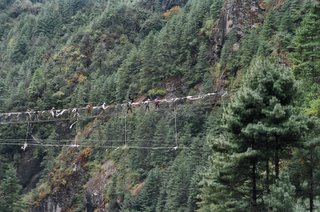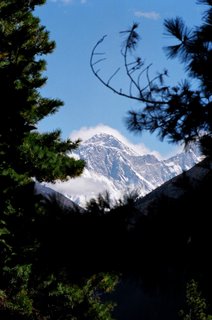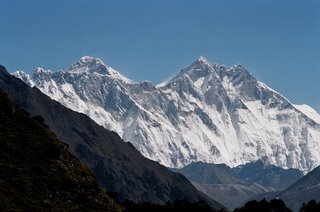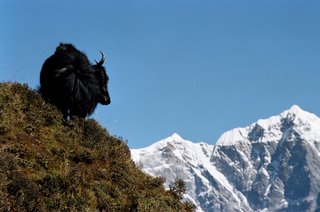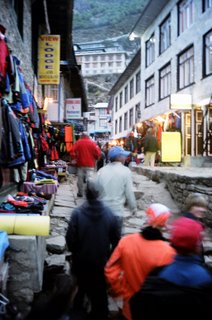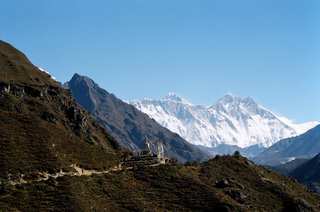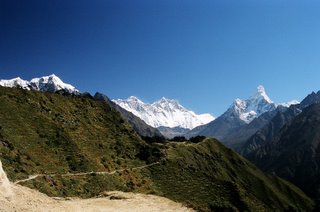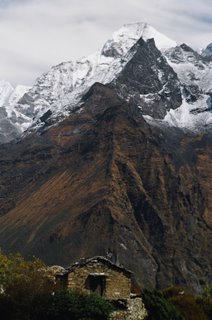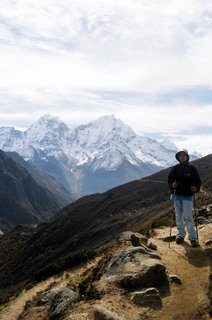It's 4 p.m. and the departure lounge of the Kathmandu domestic airport is filled with delayed passengers. Outside, a wall of gray rain is pouring down onto the runway. The Pokhara-bound flight is cancelled. So is the one to Chitwan. We, on the other hand, don't even know if our flight exists. Our boarding pass shows no flight number, or destination. We wait.
We were supposed to be flying the day before, but due to iffy weather in Lukla, there were no take-offs. In Nepali aviation parlance, in the high mountain areas of Khumbhu, "even the clouds have rocks." We are re-booked onto the 11:50 flight today, and arrive at the airport at 10 sharp. The domestic airport is in a state of glorious chaos. Mountains of gear are strewn around, each lot headed for a different climbing expedition. We navigate around a pile and arrive at the Yeti Air counter. They ask us to wait. We do. It's a long one but two years in Nepal has taught us patience. 11:50 comes and goes, and all our queries at the counter are met with a smile, and a "Please wait". Finally at about 12:30, the official looks at my ticket and says, "Oh, but your flight is gone! Boarding happened through the Skyline Airways counter." And how, pray tell, was I supposed to know that? He claims he looked for us everywhere. Everywhere that is, except across the counter. A senior Yeti Air official walks up and hears me out. "Don't worry sir, you
will fly today", he assures me. A boarding card is printed out and we are checked in. "Uh, what time is the flight?" "When it comes", is the reply.
At about 4:15, the rain shows no signs of letting up and we are thinking of returning our boarding passes and demanding our money back, when a voice calls out for "passengers to Lukla". In this weather? "Oh yes sir, weather fine in Lukla."
We are bundled into a bus which drives us to the rain drenched runway. A tiny Twin Otter aircraft waits. Except for a couple of officials, we are the only passengers. Seats are pushed back to load consignments of trekking gear (and drums of kerosene!) that fill up the entire front half of the aircraft. The cockpit door remains open.
At 25 past four, we lift off from Kathmandu. The skies clear soon after we leave the valley and then we are inside the mountains. We look out of the window at the scenery outside as the wind shear from the hills buffets the aircraft about. Half an hour later, the plane shudders and drops sharply. It banks to the left, and appears to dive straight into the hill ahead. The co-pilot stifles a yawn. At the last possible moment, we pull up, and a runway, inclined upwards at about a 20 degree angle appears beneath us. The tilt is to help decelerate the aircraft before it can overshoot the runway and fall down the other side. It feels like landing on Dhakuria Bridge. We touch down, the impact rattling the cabin and spilling some kerosene, and roar to a stop. A large sign says "Welcome to Lukla. Long live our King and Queen."
Apa, our contact in Lukla, and three-time Everest summiteer, meets us on the runway. "So you are finally here", he says, shaking our hands, and bundles us off to his hotel, Numbur, for a warm meal.


